It is a personal preference…and that is OK.
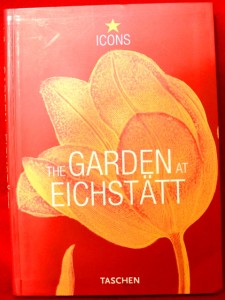
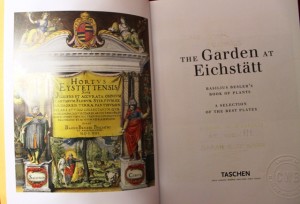
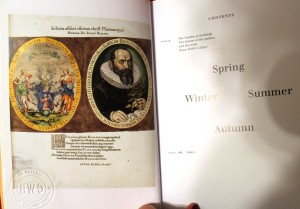
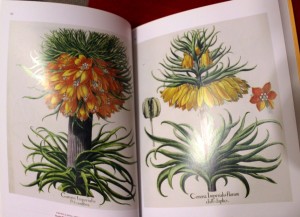
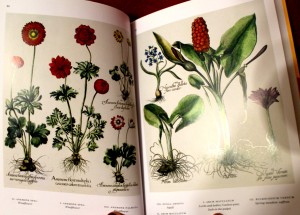
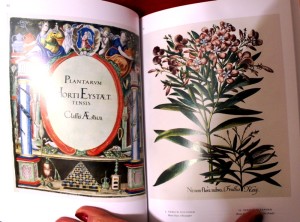
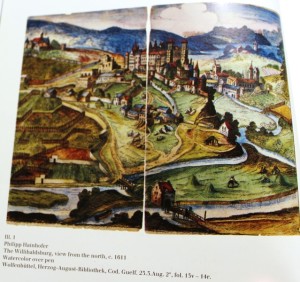
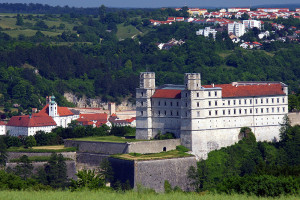 Researching and tapping into the earliest of documentation around any subject of my interest is one of my favorite activities’.
Researching and tapping into the earliest of documentation around any subject of my interest is one of my favorite activities’.
With gardening being a priority any early info is like finding Treasure Island with a foot-bridge.
More than a decade past, a lovely friend gifted a book to me… I have cherished and consider it to be among my top prized books of all time.
“The Garden at Eichstatt.”
The Willibaldsburg Castle and it’s Garden~
The Willibaldsburg is a spur castle, built between the years 1073 and 1353, in Eichstätt in Upper Bavaria. Until the middle of the 18th century it was the representative castle and seat of Eichstätt’s prince-bishops.
Extended and fortified many times during a period of 200 years, it still stands and still holds the ownership to the very first formally designed garden in the world. The garden was close to being an obsession and therefore was given the grandest of attention. ( for many years with only one set of hands.)
Reading the complete history quickly becomes clear that one must read it to grasp the scope of the intention and different levels of change the entire project went through before becoming a finished work of art.
These are a few of the photo’s in the book…hundreds of the most intricate hand drawings ever …the books speaks to the search and final choice of the artist…for the times in question…it is nothing less than amazing!
Thank you Sarah E. Othman…a gift that keeps on giving ~ Pleasure and knowledge.
The two bottom photo’s…1611…and 1998.
Rosemary (Rosmarinus officinalis) is a symbol of fidelity and remembrance once used in the holiest of Christian ceremonies, the wedding and the funeral. For centuries people thought that the rosemary plant would never grow higher than 6 feet in 33 years so as not to stand taller than Christ. Another story tells that the flowers were originally white, but changed to blue when the Virgin Mary hung her cloak on the bush while fleeing from Herod’s soldiers with the Christ child.
~
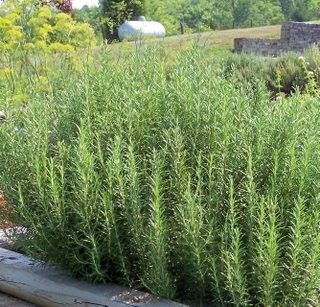 Rosemary also known as Rosmarinus Officinalis is a woody, perennial herb with fragrant, evergreen, needle-like leaves and white, pink, or blue flowers, native to the Mediterranean region. It is a member of the mint family, which includes many other herbs.
Rosemary also known as Rosmarinus Officinalis is a woody, perennial herb with fragrant, evergreen, needle-like leaves and white, pink, or blue flowers, native to the Mediterranean region. It is a member of the mint family, which includes many other herbs.
The name Rosemary derives from the Latin word “dew” (Ros) and “sea” (marinus) or “dew of the sea”. The plant is also known as Anthos the Ancient Greek word meaning flower or wild flower.
Anthos is mentioned 4 times in the Bible. James 1:10-11 and 1 Peter 1:24
But the rich, in that he is made low: because as the flower of the grass he shall pass away. For the sun is no sooner risen with a burning heat, but it withereth the grass, and the flower thereof falleth, and the grace of the fashion of it perisheth: so also shall the rich man fade away in his ways. James 1:10-11
For all flesh is as grass, and all the glory of men as the flower of grass. the grass withereth, and the flower thereof falleth away: 1 Peter 1:24
~
Rosemary is a staple in my kitchen.
There are so many ways to use this herb, from making delicious sauces to grilling on an open pit, it works magic on vegetables, meats, breads and even in drinks and desserts.
Makes a tea that will keep your system flushed and regular.
And, if you just want to enjoy the aroma, cut a few sprigs and either place in a vase of water or simply lay on the counter.
Each time you touch it the aroma will be fresh and heady.
Rosemary has many medicinal benefits, used heavily in all areas of Alternative medicine.
Much research has been completed and still ongoing that documents the major beneficial results with memory and Alzheimer’s….
~
I enjoy it in the kitchen especially during the holidays.
Tie a pretty red ribbon on a bunch and use it like cedar.
Toss a few sprigs into a small pot of simmering water with lemon and orange peel to fill your home with a lovely aroma and expand your mind!
~
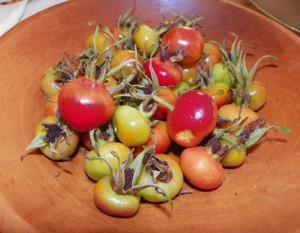 Rose (Rosa spp.) The name for a rose is almost the same in every European language. Dried roses have been found in Egyptian tombs.
Rose (Rosa spp.) The name for a rose is almost the same in every European language. Dried roses have been found in Egyptian tombs.
(Isaiah 35:1) The wilderness and the dry land shall be glad, the desert shall rejoice and blossom; like the rose.
~
The rose garden at Sage Hill Farms has 10 different varieties.
But a rose is a rose is a rose.
Unless of course-it’s a Yellow Rose from Texas…..
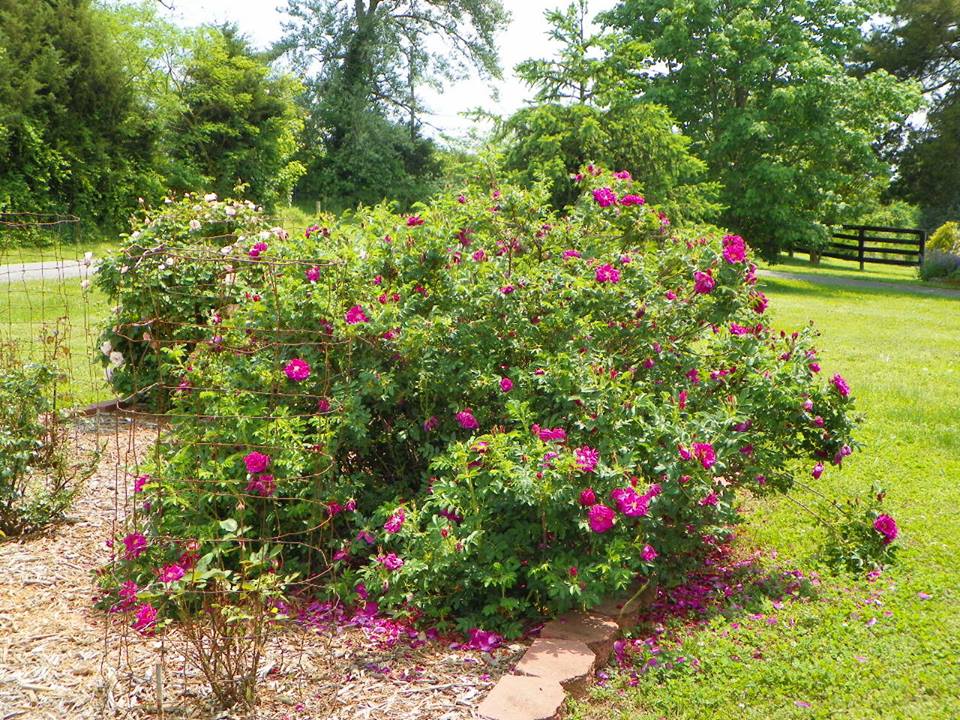 One is always as beautiful as the next-in the eye of the beholder…
One is always as beautiful as the next-in the eye of the beholder…
Rose essential oil is delicious in culinary fare.
And Rose-Hip tea is smashing~
Rose Essential oil is highly sought after, used, and the most expensive of all the oils in medicinal use.
Old World roses produce the finest hips for the oil.
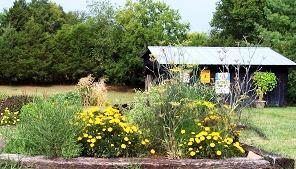 Fennel (Foeniculum vulgare) and Dill (Anethum graveolens) were carried to prayer meetings in Colonial times in small pouches. The seeds were used to curb the appetite. They were called “meeting seeds.”
Fennel (Foeniculum vulgare) and Dill (Anethum graveolens) were carried to prayer meetings in Colonial times in small pouches. The seeds were used to curb the appetite. They were called “meeting seeds.”
~
Fennel has an anise flavor and is good in oily fish dishes.Adds a good garnish to soups. The best being carrot, squash and potato.
I like it on baked Sweet potatos.
Fennel is a diuretic, reducing fluid retention.
It increases breast milk in nursing mothers and can ease colic in babies.
A strong infusion of the seed is a good antiseptic gargle for sore throats.
The tallest plant in the right hand corner of this photo is fennel.
Butterflies love it !
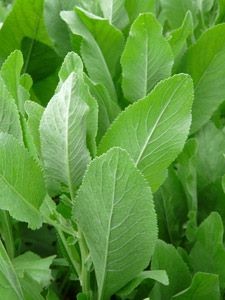 Costmary (Chrysanthemem balsamita) is also known as Bible leaf because in Colonial times a leaf served as a bookmark in Bibles and prayer books. When drowsiness set in, the sleeper treated himself to the minty leaf to stay awake~
Costmary (Chrysanthemem balsamita) is also known as Bible leaf because in Colonial times a leaf served as a bookmark in Bibles and prayer books. When drowsiness set in, the sleeper treated himself to the minty leaf to stay awake~
~
The word “cost” derives from costum, the Latin for a spicy oriental herb, so alecost means a spicy herb for ale, and costmary is Mary’s ( or women’s) spicy herb, as it was used to ease childbirth.
Finely chopped leaves is delicious in carrot soup, salads. game meat, poultry stuffing and fruit cakes.
Try it with melted butter on sweet green peas or new potatoes.
Medicinal: If you lay a leaf on a bee sting it will instantly stop hurting.
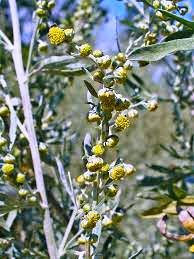 Wormwood (Artemisia absinthium….) is frequently mentioned in Scripture, always for its bitterness. According to legend, wormwood grew up in the trail left by the serpent’s tail as it slithered out of the Garden of Eden.
Wormwood (Artemisia absinthium….) is frequently mentioned in Scripture, always for its bitterness. According to legend, wormwood grew up in the trail left by the serpent’s tail as it slithered out of the Garden of Eden.
(Jeremiah 23:15) Therefore thus says the Lord of hosts concerning the prophets: “Behold, I will feed them with wormwood, and give them poisoned water to drink; for from the prophets of Jerusalem ungodliness has gone forth into all the land.”
~
This herb I can get excited about, simply for the history.
It’s from the Aster family…grows all over the world, from the United States to Siberia. It flowers from June to September. It has a strong aromatic odor and is bitter to the taste.
Alcohol or water takes up its active principles.
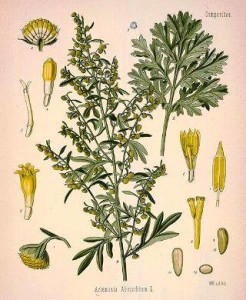 This yields what is known to druggist as “Absinthine”.
This yields what is known to druggist as “Absinthine”.
It is anthelmintic, tonic, and narcotic.
While it can be and is used medicinally it will irritate the stomach and dangerously increase the action of the heart and arteries. For this reason it should be diluted; 1 teaspoon to a pint of water.
Now…the real interesting part of its history that I am familiar with.
I know and love the city of New Orleans.
There is a very old house there called “The Absinth House.” Dates back to the early days of the settling of the French Quarter…1500/1600 hundreds.
This was a place that served only shots of Absinth. (Today it is a restaurant, and a very good one.)
Lots of history about people during that era having visions, and being mad…as in out of their mind.
Later as civilized thinking became the standard, the drink was outlawed and is against the law to possess it today….(well, there is the vaccine issue?)
We’ve come a long way my friends…or have we…
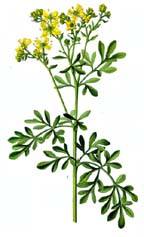 Rue (Ruta graveolens) has long been the symbol of sorrow and repentance, and may have been nicknamed the “herb of grace” in Christian times for the grace given by God following repentance for one’s sins. Brushes made from rue were once used to sprinkle holy water at the ceremony preceding High Mass.
Rue (Ruta graveolens) has long been the symbol of sorrow and repentance, and may have been nicknamed the “herb of grace” in Christian times for the grace given by God following repentance for one’s sins. Brushes made from rue were once used to sprinkle holy water at the ceremony preceding High Mass.
(Luke 11:42) “But woe to you Pharisees! for you tithe mint and rue and every herb, and neglect justice and the love of God; these you ought to have done, without neglecting the others.”
~
According the 1918 “The Herbalist” Rue is a bitter aromatic stimulant.
Good for gas pains and colic.
During the Middle Ages, rue was hung in doorways and windows to keep evil spirits out. It was thought to protect against plague, and since people also rubbed their floors with fresh rue to keep out fleas, it probably did. Many spiritual paths have recognized the potency of rue: It apparently got the name Herb of Grace because early Christians used it as a tool for asperging during exorcisms and before performing Mass, and this herb is the only one that the Prophet Mohammed blessed. This herb was grown around Roman temples to Mars and is considered sacred to him as well as to Diana and Aradia. Sensibly enough, it is good for purifying objects made of iron, Mars’ metal, before consecrating them. Rue was sometimes called witchbane because people carried bunches to keep off witches (who must have been thick as mosquitoes in those days), and the expression “rue the day” is said to come from the practice of throwing rue at an enemy while cursing him. In the 18th and 19th centuries
~
I don’t grow rue because it is very irritating to the skin and has no culinary value at all to me.
I have read two different opinions about yes it is…and no it isn’t poisonous to ingest.
I don’t advise trying it.
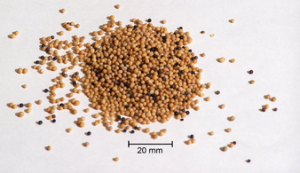 Mustard (Brassica nigra) is described in Matthew 13:31 as “the least of all seeds: but when it is grown, it is the greatest among herbs, and becometh a tree, so that the birds of the air come and lodge in the branches thereof.”
Mustard (Brassica nigra) is described in Matthew 13:31 as “the least of all seeds: but when it is grown, it is the greatest among herbs, and becometh a tree, so that the birds of the air come and lodge in the branches thereof.”
Matthew 17:20 “Because you have so little faith. Truly I tell you, if you have faith as small as a mustard seed, you can say to this mountain, ‘Move from here to there,’ and it will move. Nothing will be impossible for you.”
Mustard is a bit confusing to some.
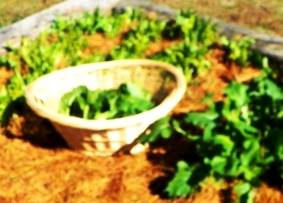 When we spread mustard on a sandwich we seldom stop to think of it as being a garden green that can be cooked like turnip greens or used as salad greens.
When we spread mustard on a sandwich we seldom stop to think of it as being a garden green that can be cooked like turnip greens or used as salad greens.
The entire plant is useful…the flowers and leaves for cooking and for salads. The seeds for sauces and spreads.
Those who juice or go the smoothie route…don’t forget the mustard.
Green, right from the garden with a sweet apple…yummy!
Mustard greens have a peppery flavor and add spice to salads that tend to be bland.
Medicinally it is used for many things…one being inflammation and pain.
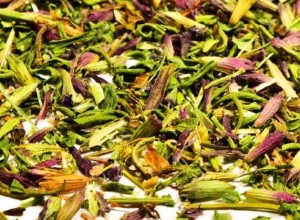 Hyssop (Sorghum vulgare) is known as the holy herb. Hyssop was used to cleanse the temples and other sacred places of the Egyptians. David mentions hyssop in Psalms 51:7. Hyssop as we know it may or may not be the hyssop mentioned by David. There is some debate since the derivation of the name hyssop is in the Greek word hussopos and the Hebrew esob, meaning simply, “holy herb.”
Hyssop (Sorghum vulgare) is known as the holy herb. Hyssop was used to cleanse the temples and other sacred places of the Egyptians. David mentions hyssop in Psalms 51:7. Hyssop as we know it may or may not be the hyssop mentioned by David. There is some debate since the derivation of the name hyssop is in the Greek word hussopos and the Hebrew esob, meaning simply, “holy herb.”
(Psalms 51:7) Purge me with hyssop, and I shall be clean; wash me, and I shall be whiter than snow.
~
**Hyssop is not a culinary herb.**
It grows to 3 feet high and looks much like a lavender plant.
It has many medicinal uses, both old and modern updates.
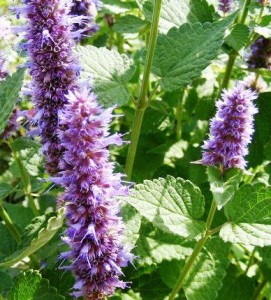 Some of well known uses are for colds, coughs, and chest infections.
Some of well known uses are for colds, coughs, and chest infections.
The flowers in your bath water are aromatic and eases the pain of rheumatism.
The green tops, cut and bruised will heal cuts promptly.
Hyssop is not recommended for those with epileptic issues or for pregnant women.
Expectorant, diaphoretic, stimulant, pectoral, carminative. The healing virtues of the plant are due to a particular volatile oil, which is stimulative, carminative and sudorific.
The infusion has an agreeable flavor and is used by herbalists in pulmonary diseases.